When it comes to fabrics, microfiber and microsuede have a lot in common. Both are lightweight, durable materials that offer great stain-resistance and ease of care. But there are some important differences between the two that you should be aware of when making a purchase decision. In this article we’ll explore the similarities and differences between microfiber and microsuede, answer some frequently asked questions, and provide helpful tips for choosing the right fabric for your project.
What Is Microfiber?

Microfiber is a synthetic material made from very fine fiber, usually nylon or polyester. It’s lightweight and soft to the touch, with great stain-resistance and excellent durability. Microfiber fabric is often used for furniture upholstery, bedding, window treatments and other home décor items. It’s also popular for clothing and is often used for light-duty workwear.[1]
What Is Microsuede?
Microsuede is a type of microfiber fabric that has been treated to give it the look and feel of suede leather. It has a short, velvet-like pile that’s soft to the touch and looks like suede.
How To Distinguish Microsuede From Microfiber?
You may be knowledgeable about the differences between microfiber and microsuede, but it can sometimes be difficult to tell them apart when you’re just looking at a piece of fabric. Here are some useful tips on how to identify them:
- Feel – Microsuede has an ultra-soft and luxurious feel, while microfiber is slightly less soft and has a tighter weave.
- Look – Microsuede has an almost velvet-like appearance, with a subtle sheen added to the fabric. Microfiber is usually matte in texture, without any shine or glitter.
- Color – Microsuede is usually available in muted, earth-toned colors like brown, tan, and navy. Microfiber can be found in a wide range of vibrant hues as well.
- Durability – Although both microfiber and microsuede are durable materials, the latter has more resistance to wear and tear, making it a better choice for upholstery and home furnishings.[2]
Origins Of Microsuede And Microfiber
The materials that make up microsuede and microfiber have been around for centuries. Microsuede is a modern take on traditional suede, which is crafted from the underside of animal skins, such as lamb or deer. This type of material has a soft, fuzzy texture and a unique look that makes it popular in clothing and home decor.
Microfiber is a synthetic fabric created from a blend of polyester and nylon fibers. It was developed in the 1970s as an alternative to natural materials, and has since become popular for its durability and stain resistance. While it doesn’t have quite the same softness that suede offers, microfiber is prized for its wrinkle-resistance and low maintenance.[2]
Benefits Of Microsuede And Microfiber
Both microsuede and microfiber fabrics offer a variety of benefits that make them attractive for home furnishings. Both materials are durable, stain-resistant, easy to clean, and very affordable. Microsuede is thicker and more luxurious than microfiber, making it perfect for upholstery on furniture like sofas and chairs. Microfiber is thinner and a bit more prone to pilling, but it also makes for a great choice for smaller items like pillows and curtains.
Another benefit of microsuede and microfiber fabrics is that they are both hypoallergenic so they’re perfect for those with allergies or sensitive skin. They are also fire-resistant and fade-resistant, meaning they will keep their color and look great for years to come with minimal upkeep.
Finally, both microsuede and microfiber fabrics do not attract dust or lint like some other materials, making them ideal for those who suffer from allergies or asthma. This also makes them great for pet owners who want to keep their furniture and fabrics clean.[2]
Disadvantages Of Microsuede And Microfiber
Both microfiber and microsuede have some drawbacks to consider before making a purchase.
Microsuede is slightly less durable than microfiber because it’s not made of woven fibers, but instead is made up of small particles of polyester that are glued together. This makes the fabric more susceptible to wear and tear over time, and it’s not as easy to clean.
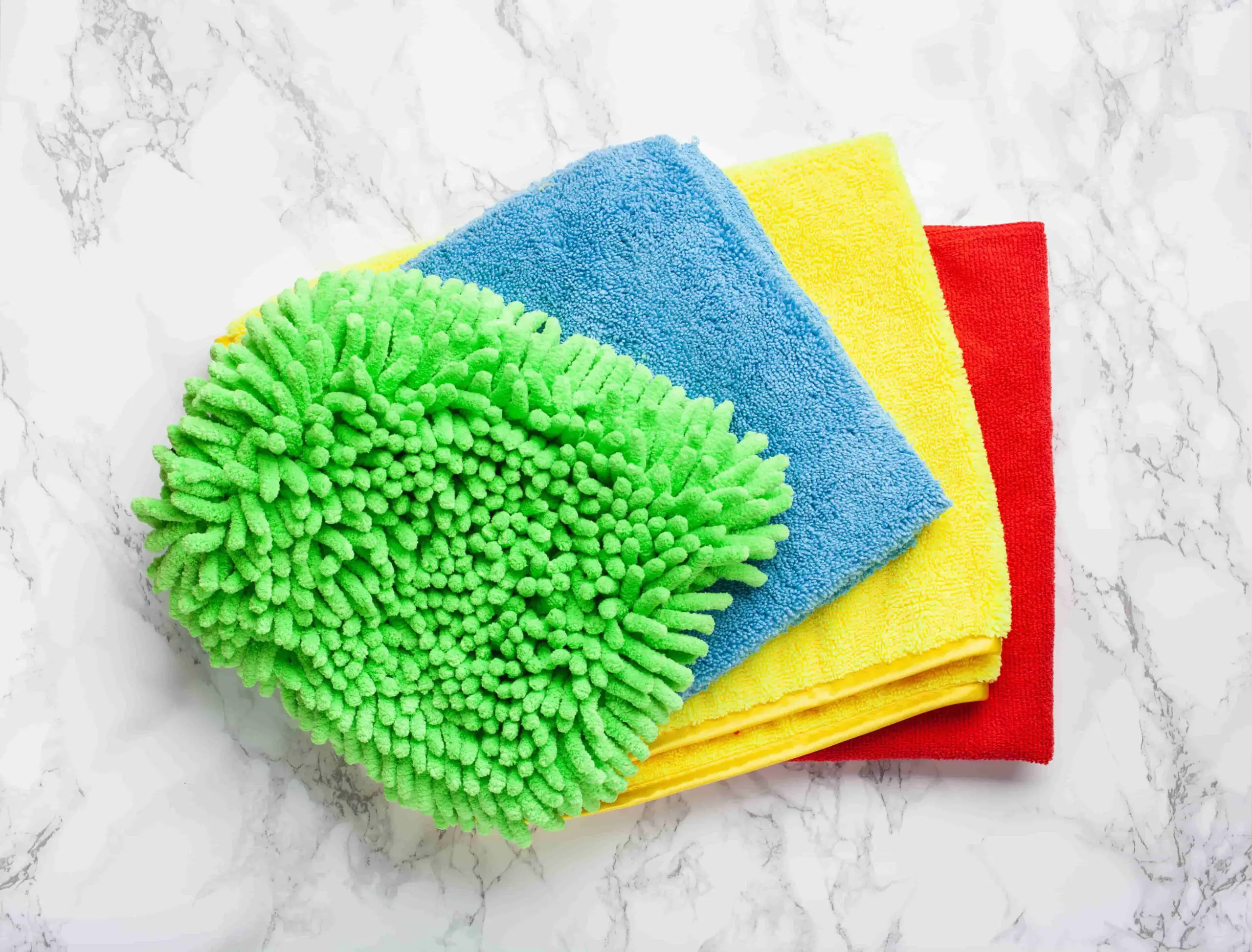
Microfiber is also more prone to staining than other fabrics, so if you have children or pets in the house then this may be something to consider. Microfiber can also attract lint and dust easily, which can be difficult to remove from fabric furniture.[2]
Uses Of Microsuede
Microsuede is a popular fabric choice for upholstery, furniture, and bedding. It has the look and feel of suede, but it is much easier to clean than real suede – a damp cloth can be used to remove dust and dirt from microsuede. It’s also resistant to stains and fading. Because of this, it’s a great choice for high-traffic areas like living rooms and dens.
Furthermore, microsuede is also often used to make clothing such as jackets, pants, skirts and even tops. It’s soft on the skin, while providing excellent protection from cold weather. Microsuede can also be used for costumes, too![1]
Uses Of Microfiber.
Microfiber is a versatile material that has many uses. It can be used for clothing, upholstery, carpets and rugs, furniture covers, and other home decor items. It’s also an excellent choice for cleaning cloths as it absorbs more liquid than traditional cotton fabric.
In the fashion world, microfiber is a popular choice for outerwear. Its lightweight feel and soft finish make it comfortable to wear, while its breathability helps keep you cool in the summer months. Microfiber can also be used to create stylish accessories such as scarves, hats, bags, and wallets.[3]
How To Clean Microsuede?
Cleaning microsuede can be a tricky job, but it’s important to make sure your furniture stays in tip-top shape. Here are some tips on how to clean and care for microsuede:
- Vacuum your microsuede regularly with an upholstery attachment or brush head. This helps prevent dirt and dust build-up, which can attract bacteria and mites.
- Spot clean stains on your microsuede furniture with a solution of warm water, dishwashing liquid and white vinegar. Blot the stain gently with a damp cloth or sponge. Do not rub too hard as this can damage the fabric.
- Use a commercial microsuede cleaner and follow all the instructions on the label. Apply it with a clean, soft cloth or brush and work in small circular motions. Don’t forget to rinse off the cleaner afterwards.
- If you need to steam clean your microsuede furniture, use low heat and very little moisture. Too much steam can shrink or discolor the fabric.[2]
How To Clean Microfiber?
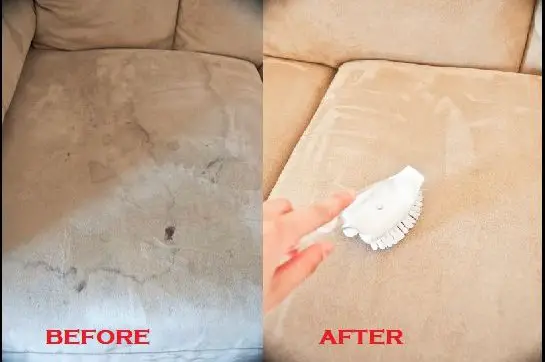
Microfiber and microsuede fabrics are both durable, easy to clean and require minimal maintenance. When it comes time for a cleaning job, however, there are different methods you should use for each one.
For Microfiber:
- Vacuum regularly to remove any dirt or debris that has accumulated on the fabric.
- Spot clean with a mild solution of water and dish detergent or upholstery cleaner.
- Use a wet cloth to dab the area you are cleaning and then use another cloth to blot the surface dry.
- Once the area is mostly dry, you may need to use a brush attachment on your vacuum cleaner to fluff the fibers.
For Microsuede:
- Vacuum regularly to remove any dirt or debris that has accumulated on the fabric.
- Spot clean with a mild solution of water and dish detergent or upholstery cleaner.
- Use a wet cloth to dab the area you are cleaning, but make sure the cloth is not too wet or the solution will soak into the fabric.
- Use another cloth to blot the surface dry, then use a brush attachment on your vacuum cleaner to fluff the fibers.
- If necessary, you may need to take additional steps like adding fabric protector or reconditioning spray. Be sure to read the care instructions for your particular microsuede fabric before doing so.[1]
How To Protect Microsuede And Microfiber?
When it comes to taking care of microsuede and microfiber, there are a few things you need to do in order to ensure your fabrics stay looking like new.
First and foremost, you’ll want to make sure that you keep the fabric away from moisture as much as possible. This includes spills, steam, and other forms of liquid. If something does manage to get on the fabric, it’s important to address it immediately – don’t let it sit.
When cleaning microsuede or microfiber, avoid using regular soap or detergent as this can damage the fibers. Instead, use a specialized cleaner that is designed for these fabrics. You can find such cleaners at most home improvement stores and online retailers.
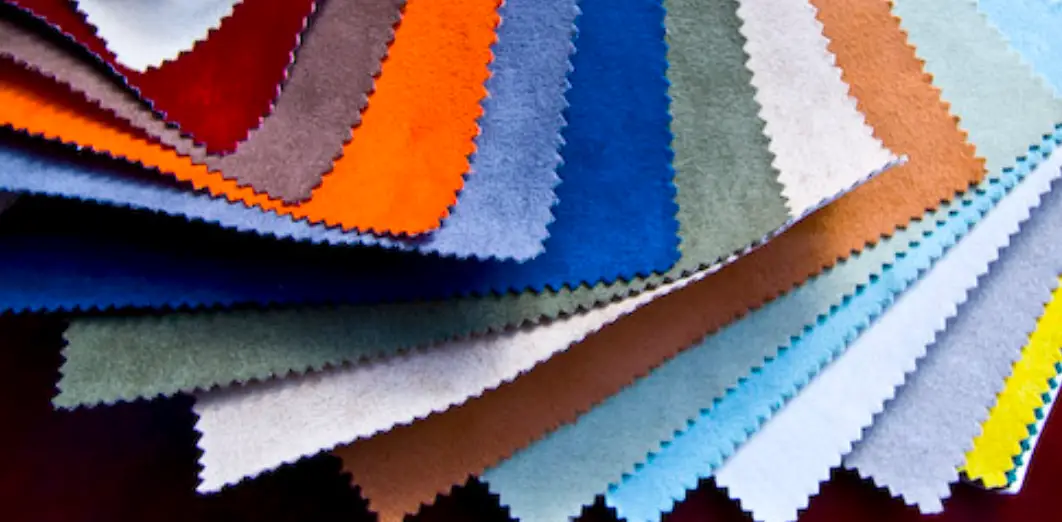
For more stubborn stains, you might want to consider investing in a fabric cleaner specifically designed for microfiber or microsuede. These cleaners are specially formulated to help remove tough dirt and grime without damaging the delicate fibers of your fabric.[3]
Comparison Of Microfiber And Microsuede
When it comes to fabric, two of the most popular choices are microfiber and microsuede. But what’s the difference between the two? Let’s take a look!
Microfiber is made from incredibly fine fibers of polyester, nylon or a combination of both. In fact, these fibers are so small that they measure a mere eight to ten thousandths of an inch in diameter – about one hundredth the thickness of a human hair!
Microfiber is soft, durable and easy to clean, making it perfect for upholstery, clothing, towels and more.
Microsuede, on the other hand, is a type of microfiber that looks and feels like real suede but typically costs much less. It is made with even smaller fibers than regular microfiber, which makes it incredibly soft and smooth – perfect for furniture upholstery, bedding and more. However, unlike microfiber, which can be easily cleaned with a damp cloth.[2]
Caring For Microfiber And Microsuede
When it comes to cleaning and caring for microfiber and microsuede, there are a few general tips that you should keep in mind. Be sure to check the care label before washing your fabric so you know what kind of cleaner to use and how to best go about maintaining its quality.

For both fabrics, hand washing is always preferred. For microfiber, you should use a mild detergent and warm water to create suds and submerge the fabric for up to five minutes. You can also spot clean with a damp cloth or vacuum it regularly.
For microsuede, you should use an enzyme-based cleaner specifically designed for suede. This will help preserve the material and get rid of any dirt or oil that has accumulated on the surface. You can also use a damp cloth to spot clean, but avoid using too much water or vigorously rubbing the fabric as this could cause it to lose its nap.[1]
When Should You Choose Microfiber?
When it comes to making a decision between microfiber and microsuede for a home textile product, the most important factor is likely going to be aesthetic. Microfiber has a very smooth finish that looks lightweight and airy. It’s also great if you’re looking for a fabric that resists staining and dirt very well. Microfiber is also much more affordable than microsuede, making it a great option if you’re looking for a budget-friendly product.[3]
When Should You Choose Microsuede?
Microsuede is a great choice for upholstery, as it gives furniture an expensive-looking finish. It’s perfect for use in homes that have pets and children, since it’s stain-resistant and easy to clean.
Microsuede is also resistant to fading from sunlight or other sources of light, so it’s perfect for areas with lots of natural light. It’s also flame-resistant and can withstand high temperatures, making it an ideal choice for furniture near fireplaces or other heat sources. If you’re looking for a luxurious look and feel with reliable durability, microsuede is the perfect option![3]
Why Do Most People Love Microfiber?
Microfiber has a lot of advantages that single it out from its competitors. It’s incredibly durable, making it perfect for furniture and upholstery. It’s also easy to clean and maintain, since it rarely requires professional cleaning services or special treatments.
And if you’re looking for something soft and comfortable, microfiber can provide that too — it’s softer than most fabrics, and the fibers trap air for better insulation.[2]
Why Do Most People Love Microsuede?
Microsuede is a popular synthetic fabric choice because of its soft and luxurious feel. It has the same velvety texture as suede leather, but without the high price tag and maintenance requirements of genuine leather. Microsuede is also easier to clean than other fabrics like cotton or linen, making it ideal for people with busy lifestyles.
Microsuede is available in a variety of colors, allowing you to easily match it with other fabrics and accessories in your home. It also has a natural resistance to wrinkles, so you don’t have to worry about ironing or steaming the material on a regular basis.[1]
How To Spot The Good, The Bad, And The Ugly?
When it comes to microfiber and microsuede, it can be hard to tell the difference. The good news is that you don’t have to take a microscope with you when you go shopping – there are some clues which will help you identify them easily.
The most obvious difference between microfiber and microsuede is the feel. Microfiber usually has a smooth, almost velvety texture, while microsuede has a more plush and suedelike feel. It’s also worth taking a look at the weave; microfiber often has a tighter weave than microsuede, which can be seen in close-up photos or by looking at the fabric in person.[3]
FAQ
What Is Microsuede Material?
Microsuede is a synthetic fabric made from polyester or other man-made fibers. It has the feel and look of suede, but without the expensive cost and delicate nature of real suede. Microsuede is often used for upholstery, bedding, purses, jackets and more.
What’s Another Name For Microsuede?
Microsuede is sometimes referred to as microfiber velvet, ultrasuede, faux suede or synthetic suede. It is also often used interchangeably with microfiber for some applications.
What Does Microsuede Feel Like?
Microsuede has a soft, velvety feel. It can be manufactured to mimic the look and feel of real suede, with none of the drawbacks.
Is Micro-Suede Real?
No, micro-suede is not real. It is a synthetic fabric made to look and feel like genuine suede leather. It is an excellent alternative to real suede because it is more durable, easy to care for and often less expensive than the natural material.
Is Microsuede A Plastic?
No, microsuede is not a plastic. It is actually a fabric made from polyester or other man-made fibers. It has the look and feel of suede, but without the expensive cost and delicate nature associated with real suede.
Can Microsuede Get Wet?
Yes, microsuede can get wet. However, it is important to clean and dry the fabric immediately in order to prevent water stains. Microfiber cloths are often used to wipe up spills quickly and efficiently, as they absorb liquid faster than most other fabrics.
How Do You Clean Microsuede?
To clean microsuede, you can use a vacuum cleaner with an upholstery attachment. Make sure to vacuum thoroughly in order to remove any dirt and dust. You can also spot-clean the fabric using a damp cloth, mild detergent and warm water. For tougher stains, consider using a suede eraser or cleaning solution specifically designed for microsuede fabrics.
Is Microsuede Scratch Resistant?
Yes, microsuede is scratch resistant. It is more durable than regular suede, and it can withstand everyday wear and tear much better than natural materials.
Is A Microfiber Waterproof?
No, microfiber is not waterproof. It absorbs moisture quickly and can be damaged if it gets wet. It is important to clean up spills immediately in order to prevent water stains.
Useful Video: Microfiber (Suede) Fabric – Close Up
Conclusion
When it comes to microfiber vs. microsuede, both fabrics have their own unique benefits and drawbacks. Microfiber is often less expensive than microsuede and offers superior stain resistance, but its synthetic fibers may not be as comfortable or durable as those found in microsuede. On the other hand, microsuede is usually more expensive but also provides a softer feel and longer lifespan. Ultimately, the choice between microfiber and microsuede largely depends on your needs and budget.
No matter which fabric you choose, it’s important to remember that proper care will extend the life of your furniture or upholstery. Make sure to follow the manufacturer’s instructions for cleaning and maintenance, as well as using protective covers or slipcovers when necessary. With the right care, you’ll be able to keep your furniture looking like new for years to come.
We hope this guide has provided you with helpful information about microfiber vs. microsuede, so you can make an informed decision about which fabric is right for your home. Thanks for reading!
Happy shopping and decorating!
References
- https://www.beanbagsrus.com.au/blog/difference-between-microsuede-microfiber/
- https://www.bossbeanbags.com.au/blog/whats-the-difference-between-microsuede-and-microfibre/
- https://shinecleaningservices.net.au/difference-between-microfiber-microsuede-furniture/

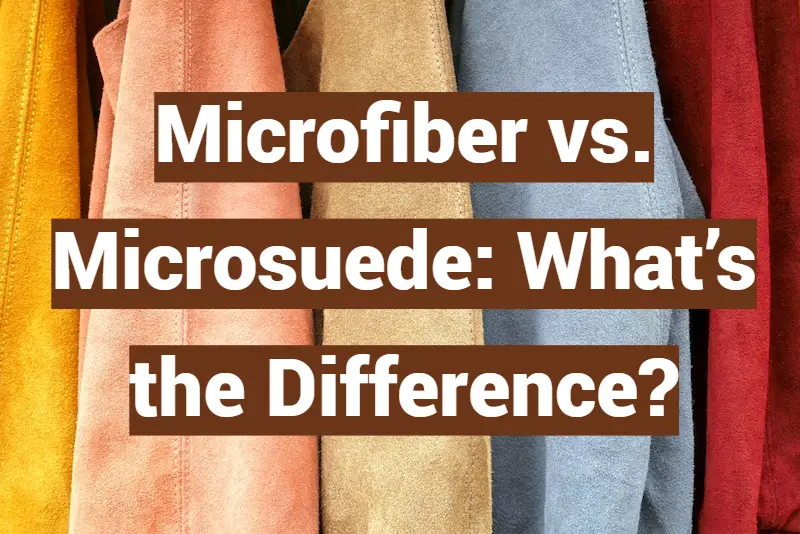
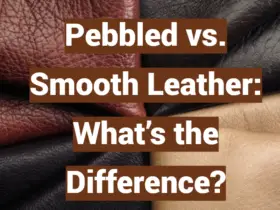
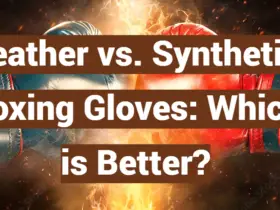
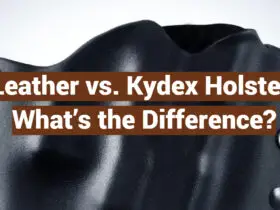
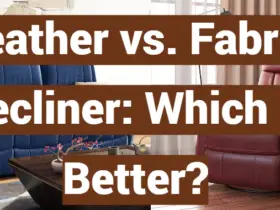

Leave a Reply